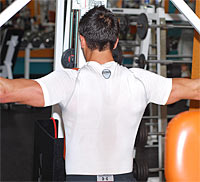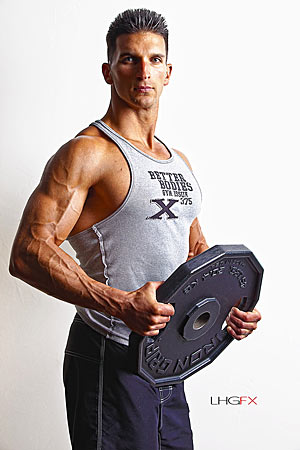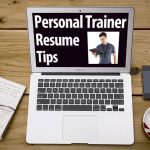- Like
- SHARE
- Digg
- Del
- Tumblr
- VKontakte
- Flattr
- Buffer
- Love This
- Save
- Odnoklassniki
- Meneame
- Blogger
- Amazon
- Yahoo Mail
- Gmail
- AOL
- Newsvine
- HackerNews
- Evernote
- MySpace
- Mail.ru
- Viadeo
- Line
- Comments
- Yummly
- SMS
- Viber
- Telegram
- JOIN
- Skype
- Facebook Messenger
- Kakao
- LiveJournal
- Yammer
- Edgar
- Fintel
- Mix
- Instapaper
- Copy Link
How To Prevent Shoulder Injury With 3 Simple Exercises
What are the first exercises you think of when it comes to building pounds of head-turning muscle mass?
Bench press? Pull-ups? Deadlifts? Squats?
While these exercises have their place, if you don’t build a solid FOUNDATION for your joints they could, in fact, be setting you up for long term injuries and setback.
Imagine that!
Although I will be the first to admit that training for joint stability may not be as sexy as crushing 300 pounds on a bench press, I will tell you right now, it is absolutely PARAMOUNT when it comes to transforming your body. It is often the more obscure muscle groups that you do not train that are holding you back.
When New York skyscrapers are being built, a solid base for the building is set up first – the foundation.
What do you think would happen if this crucial step was skipped? The building would collapse. They may not even be able to build one storey, let alone a 10-storey building.
Similarly, if your goal is a jaw-dropping physique, you need to set the groundwork first. Not only will you improve your posture, increase your active range of motion and decrease your likelihood of injury, your heavy lifts will improve dramatically to really pack on some serious slabs of muscle.
The injuries that seem to be the most common among guys (and girls) at the gym are those that involve the shoulder joint.
Anatomy 101
The shoulder joint is a “ball and socket” type joint and is meant to produce a wide range of upper body movements and mobility. Occasionally because of its extreme mobility, the shoulder joint is more prone to becoming injured during heavy lifts.
There are four major muscles that aid in the rotation and stability to the head of the humerous within the shoulder joint. They include the muscles: subscapularis, teres minor, infraspinatus, and supraspinatus. If these muscles are weak, you are not optimizing your muscle gains, or even worse, you may be setting yourself up for injury.
Self Test To Determine If Your Rotator Muscles Are Weak
Wherever you are, stop what you are doing.
You need to try this RIGHT NOW…
Stand with your back pressed against a wall and drop down into a squat position so that your knees are at 90 degrees and your ENTIRE back (lower and upper) is press against the wall. Then raise your arms out to the side so that your upper arm and shoulder are in line, and your elbow is bent to 90 degrees and the back of your hand is pressed into the wall. This includes your wrist.
Now here is the fun part…
Without letting your hands or wrist come off the wall and maintaining contact between your lower back and the wall, VERY slowly raise your arms above your shoulders and then back down.
If you can’t do this without your hand, wrist or lower back leaving the wall, most likely it is due to weak shoulder rotators and tight anterior deltoid (shoulder) and chest muscles.
Below, I will dissect how to improve your shoulder joint range of motion and stability. However, if you feel you have a condition that cannot be addressed seek out a competent injury treatment professional – ART therapist, sports therapist, or a GOOD message therapist.
Three Exercises To Improve Shoulder Stability
In addition to stretching your tight muscles – shoulder and chest – you need to work on improving the stretch of your external rotator muscles.
When working on small muscles that are imbalanced, it is best to apply a unilateral protocol. That is, every move should be done on one side and then the other, or by using a machine that allows for free movement of both arms separately. This is done because if there are right to left strength imbalances, the tendency is to let the strong side pick up the slack for the weaker side.
If your goal is shoulder stability, I have provided a shoulder strengthening routine that should be done BEFORE any upper body weight lifting days. Remember, shoulder stability should be your primary focus if that is your weak link. The exercises are as follows:
A1. Low Pulley External Rotation: 15-20 repetitions each arm
In a seated position facing a low pulley system, grab the handle and place your elbow on top of your knee so that your forearm is parallel with the floor. Now without moving any other part of your body, slowly raise the weight until your forearm is perpendicular to the floor.
A2. High Pulley Reverse Fly: 15-20 repetitions
Standing and facing the high pulley system, grab on to the cable ends (no handles needed), with your shoulders FULLY protracted forward. Without moving any other part of your body and maintaining absolutely straight arms, move your arms backward by contracting your rear deltoid and scapular muscles.
A3. Prone Dumbbell Reverse Flys: 15-20 repetitions
Face an incline bench so that your chest is supported by the top of the bench. First, protract (shove your shoulders forward so your scapula is flat) your shoulder blades, and then slowly raise the weight as much as you can using only your rear deltoids and shoulder blade muscles. Hold for one second at the top before slowly returning to the starting position.
Do not rest between exercises but rest one minute between sets. Start with two sets and add on one set each week until you are doing the circuit for four sets.
The “Weak Side Rule”
When doing unilateral moves, I apply the “weak side rule.” That is, start with your weak side first. Only do as many reps as you can with your weak side, and only do that number of reps (no more) with your strong side. This will even out any left to right imbalances.
The Bottom Line
I realize this may not be the most exciting topic, but it is NECESSARY if your goal is a muscular physique. All of your heavy lifts will improve exponentially. Not only that, but you will improve posture and decrease the likelihood of injury… ensuring you get the most out of your training program.
See Also:




